400-Calorie RecipesDelicious and Satisfying Meals That Keep You to a Balanced
1200-Calorie Diet So You Can Lose Weight without Starving YourselfDICK LOGUE Text 2011 Dick Logue
Text 2011 Dick Logue
Design 2011 Fair Winds Press First published in the USA in 2011 by
Fair Winds Press, a member of
Quayside Publishing Group
100 Cummings Center
Suite 406-L
Beverly, MA 01915-6101
www.fairwindspress.com All rights reserved. No part of this book may be reproduced or utilized, in any form or by any means, electronic or mechanical, without prior permission in writing from the publisher. 15 14 13 12 11 1 2 3 4 5 ISBN-13: 978-1-59233-462-9
ISBN-10: 1-59233-462-8 Digital edition published in 2011
eISBN-13: 978-1-61058-058-8 Digital edition: 978-1-61058-058-8
Softcover edition: 978-1-59233-462-9 Library of Congress Cataloging-in-Publication Data available Cover and Book design by Kathie Alexander Printed and bound in Canada The information in this book is for educational purposes only. It is not intended to replace the advice of a physician or medical practitioner. Please see your healthcare provider before beginning any new health program. To my wife, Ginger, my greatest helper and biggest fan  ContentsIntroductionWhy 400-Calorie Recipes? No doubt that is the first question that came to your mind when you saw this book. The answer is simple, a 400-calorie meal is just what you need to lose weight, a meal that satisfies you and keeps your hunger at bay until the next meal but only contains 400 calories.
ContentsIntroductionWhy 400-Calorie Recipes? No doubt that is the first question that came to your mind when you saw this book. The answer is simple, a 400-calorie meal is just what you need to lose weight, a meal that satisfies you and keeps your hunger at bay until the next meal but only contains 400 calories.
You might call them mega. Of course, there is more to it than that. The goal of our meals is to help you be healthier, lose weight, and do it all without feeling deprived or hungry. Does this sound too good to be true? Its not! The key is to eat foods that contain all the nutrients you need and that stick with you until the next meal. Each meal we offer here is approximately 400 calories, so you can eat three of these filling meals, or even four, and still only get 1200 to 1600 calories per day. In the next chapter, well explore in detail how all this works, talking about calories, nutrient density, and the kind of foods you should and should not be eating.
But for now all you need to know is that it does work. This is not something that I created. It is based on the research of a number of doctors and nutritional experts. One of the most important is Dr. Barbara Rolls, a professor of nutrition at the University of Pennsylvania. Dr.
Rolls has published a number of articles and research papers on the subject of diet and weight loss. She says that people feel full because of the amount of food they eat not because of the number of calories or the grams of fat, protein, or carbohydrates. So the trick is to fill up on foods that arent full of calories. She has done a number of experiments to confirm her findings. She found that given free choice, people tended to eat the same amount of food each day. By varying the amount of high volume, low calorie foods compared to high calorie, low volume foods, people were able to eat the same amount and feel just as satisfied while eating as much as 400 fewer calories per day.
She uses the term energy density to describe the number of calories in a given quantity of food. In order to see how significant this is, lets take a quick look at how people lose weight. There are lots of different diets and lots of different theories, but the bottom line is that if we burn more calories than we take in, we lose weight. If we eat more calories than our bodies use, we gain weight. About 3500 calories is equivalent to a pound. So Dr. So Dr.
Rolls findings mean that people could lose almost a pound a week not even watching how much they eat, just replacing some of the foods with high energy density with other foods with lower energy density. An example is a pasta salad. If it contains a lot of pasta compared to vegetables, it will have a high energy density. If you replace some of the pasta with additional vegetables you will still have the same volume of food and feel just as satisfied but with fewer calories. That is one of the main concepts that went into creating these recipes. So the obvious question is how many calories we burn in a day.
There isnt any simple answer. It depends on a number of factors including age, gender, activity level, and your current weight and height. There are a number of sites online that contain a calorie needs calculator that will do your specific calculation. But I can tell you this, no matter what I put into them I didnt come up with anything less than 1500 calories per day. That figure was for a small, older, sedentary woman. For my own calculation, I came up with more than 2200 per day to maintain my weight.
So how does all that relate to this book? Im suggesting that if you want to lose weight, you can eat three satisfying meals a day of about 400 calories each, maybe throw in a healthy snack or two, and end up with a total daily calorie count of less than 1500 calories. In my case, that would translate to a weight loss of about a pound and a half (0.68 kg) a week. Of course as the auto commercials used to say your mileage may vary. Your answers to the calorie calculator are going to be different than mine and your expected weight loss will be different. But unless you are a person already so thin that you dont need to lose weight, you will almost certainly be eating fewer calories than you burn. Of course it isnt quite that simple.
Since I came to create recipes because of a need to eat heart healthy food, I have some ideas about how we should structure these mega meals for maximum health, not just weight loss. In the next section, well discuss some of those. Our Approach to Weight Loss Ive identified six key areas that I looked at as I created these recipes. As I said, the goal is a healthy diet that will help you to lose weight. Well look at each of those areas in more detail in the next chapter. Low Energy Density We can eat the healthiest diet imaginable, but if we eat too many calories we arent going to lose weight.
That statement isnt quite true. The other concepts of healthy eating actually support this goal also. High fat foods are generally unhealthy to eat. They also provide more calories for a given quantity of food. Fiber contains few calories, so high fiber foods are not only good for you, but they are also a way to speed your weight loss. High Nutrient Density This is in some ways the opposite of energy density.
What it measures is the amount of nutrients in a specific quantity of a given food. A system of rating nutrient density called the Aggregate Nutrient Density Index (ANDI) was developed by Dr. Joel Fuhrman, a New Jersey physician who specializes in preventing and reversing disease through nutrition. The rankings are based not only on vitamins and minerals but also phytochemicals, compounds that are thought to promote good health but have not been established as essential nutrients. This includes things that you have probably heard of like antioxidants and beta carotene. Focus on Fresh, Minimally Processed Foods There has been an increased focus on avoiding processed foods in recent years.
This has resulted in things like the caveman diet and Paleolithic diets. Im not going to go so far as to suggest that, but I will say that I believe processing reduces natural nutrients and replaces them with chemicals, some of questionable safety. The Canyon Ranch spa cookbook I own suggests Dont eat anything your great-grandmother didnt, and that seems like a reasonable approach to me. That being said, I do use artificial sweeteners to help hold down the calories in some recipes with significant amounts of sugar, so I do make compromises.
Next page

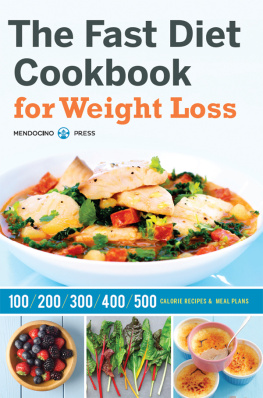
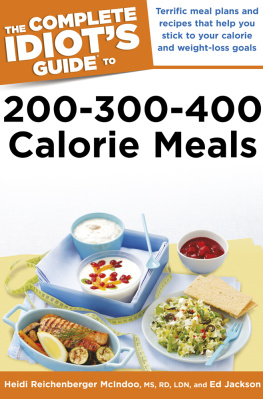
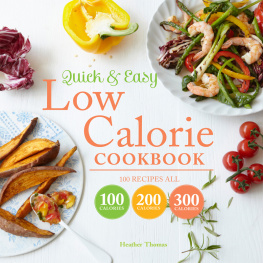
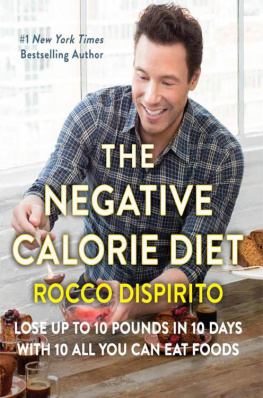
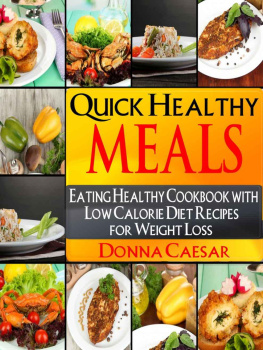
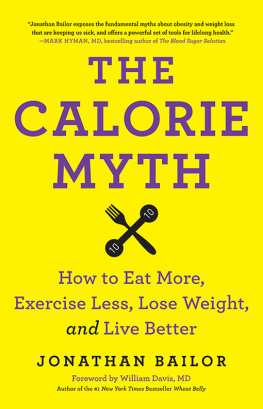
 Text 2011 Dick Logue
Text 2011 Dick Logue ContentsIntroductionWhy 400-Calorie Recipes? No doubt that is the first question that came to your mind when you saw this book. The answer is simple, a 400-calorie meal is just what you need to lose weight, a meal that satisfies you and keeps your hunger at bay until the next meal but only contains 400 calories.
ContentsIntroductionWhy 400-Calorie Recipes? No doubt that is the first question that came to your mind when you saw this book. The answer is simple, a 400-calorie meal is just what you need to lose weight, a meal that satisfies you and keeps your hunger at bay until the next meal but only contains 400 calories.